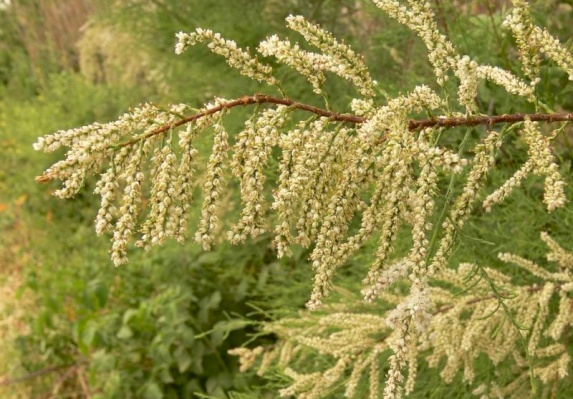Tamarisk
Some rights reserved © Pavel Buršík View source, Supplier: BioLib.cz
This salt-tolerant tree of the Tamaricaceae family can grow to heights of 3-6 meters. It has a reddish-brown bark, a round stem and scale-like sessile alternating leaves with salt-excreting glands. Its tiny white flowers have four petals and five stamens. Almost all of the flowers are hermaphroditic. They are arranged in clusters, 2-3 cm in length, on terminal spikes.
Flowering period: It flowers from March through to August and is pollinated by insects.
Its fruit is a capsule with seeds that have fine hairs (pappus) for dispersal by wind.
Ecology: It can flourish in diverse habitats: riverbeds and marshes, as well as steppes and deserts.
Common and medicinal uses: Research has shown it to be an effective mosquito attractant and as well as a good source of biofuel but these uses have not been developed commercially.
Distribution in Palestine: It can be found in most of the Jordan River valley, the Dead Sea basin and Jerusalem Wilderness desert.
Other names: Jordan Tamarisk.
IUCN red list status: Near Threatened.
Local status: Near Threatened.

